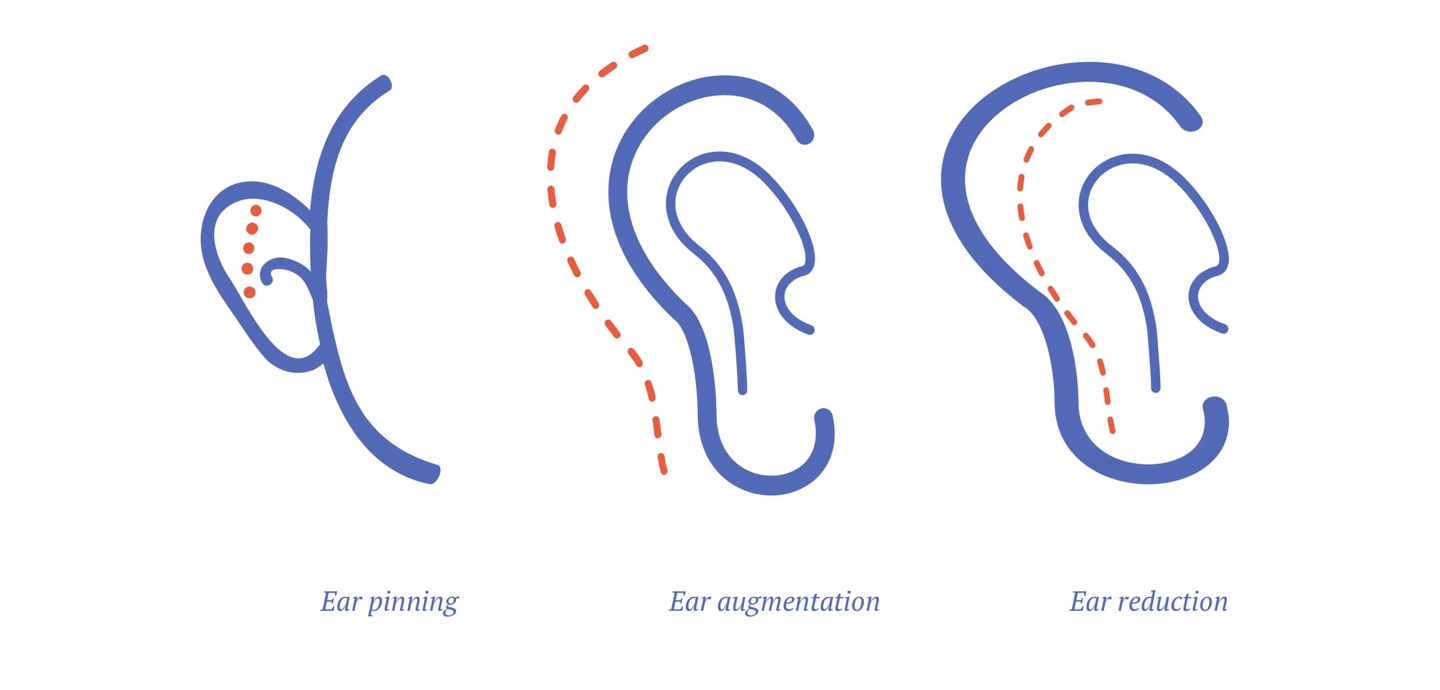Journal
An Overview of Otoplasty in Seoul Korea
2023-09-01
More

Overview
Patients with protruding ears are often the victims of comments and bullying from their surroundings. Children and adults with protruding ears suffer from a lack of confidence and live with a certain physical discomfort that makes them feel different. Ears surgery, also referred to as otoplasty, can change their size, location, or proportion. Otoplasty can be used to fix an ear structural deficiency that is present at birth or manifests over time. This procedure can also be undergone to treat ears that have been injured or are misshaped. Hence, if you want to get your ears fixed at a reasonable price, South Korea is an excellent option, where the quality of medical services is at the highest level.
Who is a good candidate for otoplasty?
Otoplasty can be performed from the age of 7, the age from which the ears have acquired their size and shape. The procedure is particularly indicated when the child expresses the desire and is in a situation of psychological suffering. Otoplasty is also suitable at any age, for women and men. Additionally, some individuals could have undergone otoplasty and are dissatisfied with the outcome. They can opt to have a different surgery as a result.
Otoplasty is frequently performed on ears that protrude from the head, are bigger or smaller than the normal ones, have misshapen ear lobes, missing certain portions of cartilage, or have an irregular form as a result of trauma, injury, or a structural birth defect.
What are the different types of otoplasty?
Ear pinning, ear augmentation, and ear reduction are the three major otoplasty procedures that are carried out most commonly.
Pinnaplasty or ear pinning where its main objective is to restructure deformed cartilage and bring the ears closer to the sides of the head. When performing this surgery, surgeons use tiny incisions behind each ear cartilage to reshape, fold, or remove some of the cartilage to give the ears the chosen shape.
Ear augmentation where its aim is to enhance the ear's outer part, especially for people suffering from non-fully developed or misshapen ears. Grafting of tissue or cartilage is typically required for this surgery.
Ear reduction where its goal is to fix the oversized ears. During this procedure, the surgeon will cut away tissue to reduce the size of the ears.
*Docfinderkorea's partnered clinics only perform pinnaplasty or ear pinning surgery.

What is the procedure like?
Typically, otoplasty is performed as an outpatient. Thus, the patient will be able to be discharged on the same day. It is performed generally, under general anesthesia where the patient is fully unconscious, or local anesthesia with sedation where the patient is asleep but still able to reply to inquiries. additionally, depending on the type of otoplasty, different surgical procedures are required. Common steps consist of:
- Incision: often in the ear folds or on the back of the ear.
- Adjusting the ear tissue.
- Restructuring the ear.
- Securing the wound with stitches.
Does it involve risks?
Otoplasty surgery has relatively little risk, especially if the performing doctor is board-certified and has experience in ear, nose, and throat surgeries. Visible scars, infection if the entrance wounds are not adequately healed or cared for, or even asymmetrical outcomes are all potential post-operative problems. Because otoplasty is just an outer ear operation, your hearing won't be obstructed or in any way compromised.
After surgery
Generally, most of the patients will see the results immediately after removing the protective dressing. However, they need one to two months to appreciate the final result. This is the time necessary for the tissues to have softened and for all of the edema to have resolved, leaving the relief of the ear clearly visible. After this time, only the scars will still be a little pink and hardened before fading.
Regarding the pain, the removal of extra cartilage and subsequent repair of the defect causes the majority of the pain during the procedure. The typical patient takes the painkiller for one to two days, then only at night to help them sleep. The majority of side effects, which usually last a week, include swelling, bruising, and redness. Although the procedure itself won't impair the patient’s hearing, the surgical bandage placed over the ears may briefly cause hearing problems. It is recommended to wear a button-down shirt during the first week after surgery and sleep on the back side with the head and neck elevated to lessen swelling. and it is highly recommended as well to avoid leaning over since it puts more pressure on the region around the ears.
The surgery will most often make it possible to effectively correct the present anomalies and to obtain ears normally positioned and oriented, well-plicated, symmetrical, and of natural size and appearance. The surgeon will explain the whole recovery process during the appointment, to make sure that the patient is going to have the best outcome.
More Tips to follow after otoplasty
I you are thinking of undergoing an otoplasty, here is your ultimate to-do list after surgery.
How to sleep after ear surgery
In the first few weeks after the surgery, it is best to keep your head elevated to reduce the level of swelling and bruising. Your head should be higher than your body, especially when sleeping. So put two or three pillows under your head. Also, avoid sleeping on your ears.
Avoid getting your head wet
As you know, it is necessary to use a headband in the first days after the operation, so it is necessary that this headband be kept clean and dry. Avoid washing your hair for the first week.
Do not dry hair and avoid extreme heat
Avoid exposure to extreme sunlight or the heat of a blow dryer. Because your ears are quite numbed for a period of time after otoplasty, you may not notice the damage caused by intense heat, which can be dangerous to the outcome of your otoplasty.
Medicines after otoplasty
You will be prescribed medications to reduce pain and swelling after the operation. Make sure to take these medications on time.
Use ointment to remove the sutures
A topical ointment or cream is prescribed for use on incisions, and sutures. This ointment and cream helps to reduce the wound site as much as possible.
Eating after ear plastic surgery
It is very important to follow a healthy diet after the surgery for a faster recovery. Have a fortifying diet rich in vitamins, proteins, and fiber, and avoid eating salty or spicy foods. To reduce swelling, your diet should be low in salt.
Dress appropriately
After the operation, wear clothes with buttons open in the front so that it is not necessary to put them on or take them off over the head. Because when you take off the clothing, your ears may be harmed.
Do not do heavy sports activities
Avoid putting any pressure on your head. After the procedure, it is necessary to rest. Avoid doing any heavy sports activities in the first days after the operation.

FAQ
Do Otoplasty’s results last forever?
In general, yes. You shouldn't have any reason to worry about your ears returning to their previous state as long as you take good care of them during your recuperation period. However, when a patient feels that the alteration is insufficient, which is more often the case when one ear protrudes somewhat more than the other, we can undertake revision surgery. All of this is contingent upon reasonable expectations, which are thoroughly addressed in a consultation with your surgeon.
What side effects might be accruing after undergoing an Otoplasty?
There are a few possible side effects even though otoplasty is usually rather safe. Among them are asymmetry, infection, and obvious scarring. Considering that the inner ear is unaffected by this surgery, there is no chance of hearing problems.
Am I really a good candidate for Otoplasty?
Otoplasty surgery is typically requested by patients to address protruding ears. You will get the chance to meet our expert surgeons and go over your objectives during your consultation. Whether you are a good candidate will be determined by the performing doctor based on your goals, medical history, and physical examination.
Before Otoplasty
- Pre-operative consultation with the surgeon is important.
- There will be before and after pictures of the ears that protrude.
- A headband designed for protection and support, similar to a tennis headband, will be advised.
The following are the preoperative guidelines for all facial and ear surgeries:
- To lower the risk of problems, the patient should quit smoking at least one month prior to the surgery and for up to fifteen days following it.
- Give up all antiplatelet or anticoagulant medication 15 days in advance.
How much time does the Otoplasty surgery process usually take to finish?
Operationally, cosmetic ear pinning surgery typically takes two to three hours.
Why I should undergo Otoplasty in Korea?
While bringing harmony and symmetry to the ears and face, otoplasty gives the ears a more natural form. Even the correction of minor malformations may significantly impact a person's appearance and self-esteem. You could think about plastic surgery if your kid or you are bothered by protruding or misshaped ears. Foreigners come to Korea to undergo different procedures and otoplasty is one of them. Schedule your consultation Now!
How much does Otoplasty cost?
The cost of an otoplasty might differ significantly depending on the kind of procedure, the methods/techniques employed, and the surgeons/clinics.
Back


